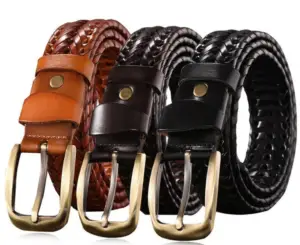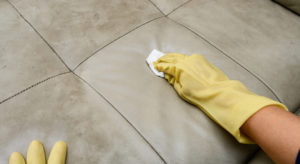How to Repair Scratches on Leather Car Seats
Scratches on leather car seats happen for a variety of reasons including normal wear and tear, claws from your cats and dogs, key scratches, or even just forgetfully placing sharp objects on the seats.
These scratches are not only unsightly but also tend to decrease the overall value of your car.
In this article, we’ll look at ways to prevent scratches on your leather car seats, repair techniques for existing scratches, and tips for maintaining the overall condition of your leather seats.

How to repair scratches on leather car seats
Leather seats differ from cloth seats in that they are prone to scratches. Luckily, it’s possible to fix or repair the scratches using a leather touch-up kit designed to remove scratches and scuff marks and restore the color of the seats. You can also use a leather conditioner or a DIY leather repair kit.
Repairing scratched leather can be tricky, but with the right tools and techniques, you can make your seats look good again.
The repair can be done using a few different methods and below is a step-by-step guide for removing those nasty scratches and scuff marks from your leather seats using a touch-up kit, DIY leather repair kit, and leather conditioner.
Step 1: Clean the leather surface
The first step is to clean the scratched surface thoroughly with a bar of mild soap and water or use a leather cleaner. This will help to remove dirt and grease that make the leather seats slippery.
To clean the leather, gently clean the scratched area making sure to work the soap into the leather.
Next, rinse the area with clean water and a clean cloth ensuring to remove all traces of soap, and then dry the surface completely with a clean cloth.
It’s important to use a mild soap or cleaner, as harsh chemicals or abrasives can damage the leather. Also, be gentle when cleaning the scratched area to avoid causing any further damage.
Step 2: Using the Leather Touch-up kit method
Leather touch-up kits are a type of repair kit specifically designed to repair small scratches, scuffs, and other minor damage to leather surfaces.
These kits typically include a small bottle of colored dye, an applicator brush, and sometimes a sealer, depending on the brand and the type of kit.
With the use of a leather touch-up kit, you can easily get rid of scratches on your leather car seats by following these steps.
- Apply the colored dye carefully to fill in the scratch using the applicator brush provided in the kit.
- Ensure the dye you choose matches the color of your leather seats as closely as possible so that it blends in seamlessly.
- Once the scratch is filled in, you may need to seal the area with the sealer that comes in the kit, if any.
- Allow the dye and sealer (if used) to dry for a few minutes, and then buff the area with a clean cloth.
Step 3: Using the DIY Leather repair kit method
A DIY leather repair kit is a kit that contains various tools and materials that are needed to repair leather surfaces.
These kits are designed for individuals to use at home, rather than having to hire a professional leather repair specialist. They typically include a heat tool, a colorant, a filler, and a sealer.
To repair scratches using a DIY leather repair kit, you will need to follow these steps:
- Apply the filler to the scratch using the applicator tool that comes with the kit, making sure to fill the scratch completely.
- Use the heat tool to melt the filler. This will cause the filler to adhere to the leather and the scratch will be less visible.
- Next, use the colorant to match the color of the leather so that the repair blends in well with the rest of the seat.
- Apply the sealer to the area in order to protect the repair and prevent further damage.
- Finally, after giving the sealer some time to dry, buff the area with a clean cloth.
Step 4: Using a leather conditioner method
Leather conditioner can be used to help remove scratches on leather to some extent.
The way it works is by moisturizing the leather and making it more pliable, which can help to fill in the scratch.
However, it’s important to keep in mind that the success of using leather conditioner to remove scratches will depend on the depth and size of the scratch.
Scratches that are deep or that have penetrated the leather’s surface may not be repairable with leather conditioner alone. In this case, you might have to use a leather touch kit or DIY leather repair kit as explained above.
For the leather conditioner method; follow these steps.
- Apply a small amount of leather conditioner to a soft cloth.
- Gently rub it into the scratch.
- The conditioner will help to moisturize the leather and make it more pliable, which can help to fill in the scratch.
- Allow the conditioner to dry for a few minutes.
- Buff the area with a clean cloth.
Note that while using any of the above methods can help to get rid of the scratches on the leather, the success of the repair will depend on the depth and size of the scratch.
It will also depend on whether the leather is finished or unfinished. Since unfinished leather has not been treated with a finish, it is more porous and can absorb liquids more easily. This makes it easier to repair scratches, as the conditioner or touch-up dye can penetrate the leather more easily and blend in with the surrounding area.
Finished leather, on the other hand, has been treated with a finish or coating that provides a protective barrier on the surface of the leather. This finish can make it more difficult to repair scratches, as the conditioner or touch-up dye may not penetrate the surface as easily.
Also, it’s important to be gentle when applying any substance to the scratch area to avoid any further damage and to be sure to use the correct colorant for the specific leather.
If you are unsure about the color or the process, it’s recommended to use professional repair services.
Conclusion
In conclusion, scratches on leather car seats can be a frustrating problem. However, with the right prevention techniques and regular maintenance, you can keep your seats looking good for longer.
Using seat covers is one way to prevent scratches on leather if you have cats, dogs, and kids. Also, it’s good to be mindful of sharp objects and to keep items in your car organized.
When it comes to repairing the scratches, there are several options available, including using a leather conditioner, touch-up kits, DIY leather repair kits, or professional repair services.
The method you choose will depend on the depth and size of the scratch, and whether the leather is finished or unfinished.
It’s also important to note that regular cleaning, conditioning, and protecting the leather can also prolong the life of your seats.






